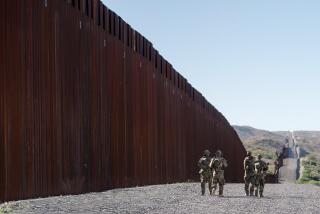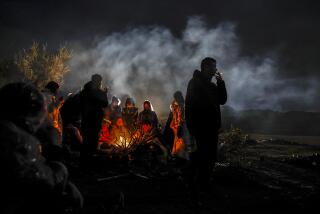Where the border fence meets the sea, a strange beach scene contrasting the U.S. and Mexico
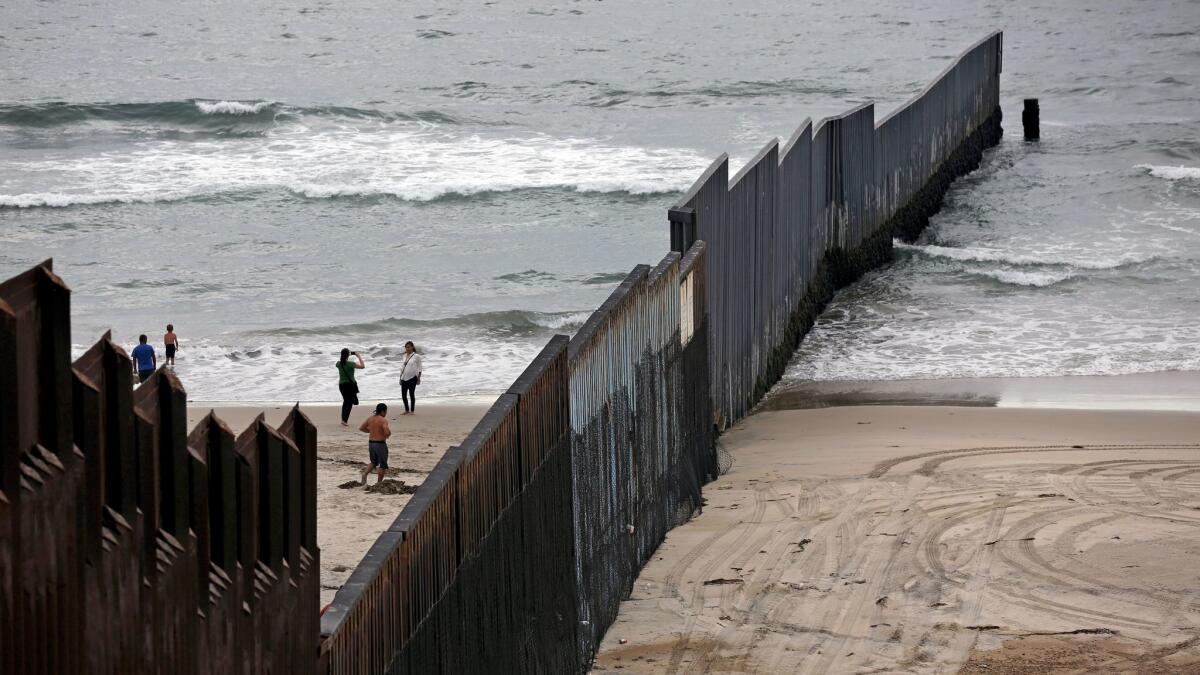
Thrusting into the sky from the edge of the Pacific, Tijuana’s lighthouse, or faro, sends out a beacon where the northwestern nook of Latin America edges against the southwestern tip of the United States.
A coastal esplanade south of the fence marking the international boundary is both a beachy hangout and a hub for border artists and activists, yoga aficionados and bemused tourists snapping selfies.
It is also the site of often-emotional encounters during which stranded deportees on the south visit with separated loved ones on the north, albeit through a mesh-steel fence. A minister of the “church of the lighthouse” says an interfaith prayer on behalf of divided families. The barrier has become a kind of politically charged art installation, featuring evolving images and slogans, most condemning President Trump’s immigration policies.
“Family reunification,” reads one graffiti manifesto splashed on the southern face of the fence. “A future to believe in.”
A now-painted over sign once blared: “Empathy.”
There are neighboring communities the length of the U.S.-Mexico border: Calexico and Mexicali, El Paso and Ciudad Juarez, Brownsville and Matamoros. But here where the border meets the sea, one side is oddly festive, the other dire and militaristic — the contrasts and frictions of U.S.-Mexico relations summed up on a beach.
Summer days in the neighborhood known as Playas de Tijuana bring a vigorous coastal tableau: wandering musicians, families with towels and umbrellas, kids rollicking in the surf. Vendors hawk ice cream. Cafes serve cerveza and mariscos — beer and shellfish — and the scent of carne asada wafts through the breeze.
A nearby gated community is home to opulent coastal mansions, including a Moorish-themed home said to belong to the family of superstar Juan Gabriel, the recently deceased Mexican singer and songwriter.
From a hilltop across the divide in the United States, where a pair of World War II-era bunkers still dot the landscape, the stolid circle of Tijuana’s beach-side bullring stands in shadowy contrast to stadium-style lights meant to deter illegal entrants.
Stretching to the north lies a white-sand stretch of California coast littered with clumps of seaweed and home to vigilant seagulls. No people are in sight.
Raw sewage from Tijuana frequently seeps into the coastal wetlands on the U.S. side, deterring many from the beach at Border Field State Park, as the zone is called.
The park, much of it the site of a former naval airfield, was dedicated in 1971 by then-First Lady Pat Nixon, whose excursion to the border was documented by the Los Angeles Times society editor. The first lady donned a “beige and white jacquard jacket and costume” on that long-ago August day, not the “respectable Republican cloth coat” that her husband had lauded in his classic “Checkers” address.
She confidently stepped across the then-skimpy barbed wire barrier marking the border, The Times reported, and was “engulfed by the Spanish-speaking crowd” as a mariachi band followed. The first lady vowed to return someday “to try surfing” and declared: “I hate to see a fence anywhere.”
Looking back, Pat Nixon spoke on the cusp of an era in which massive illegal immigration via a porous U.S.-Mexico border would help spur a demographic and political transformation in California and beyond. The solid Republican California that produced Richard Nixon would vanish, as would the near-open border.
In a generation, the country has gone from a first lady who openly abhorred border fences and waded into a crowd of well-wishers in Tijuana to a president who denounces Mexicans as criminals, vows to build a border wall and is a demonized figure in Mexico.
The 1970s vision of a cross-border park for residents on both sides of the divide never came to pass. The notion now seems quaint and naive, even utopian.
These days, a metal barrier undulates down the hills into the surf, like an iron jetty. It’s meant to stop people, not to break waves.
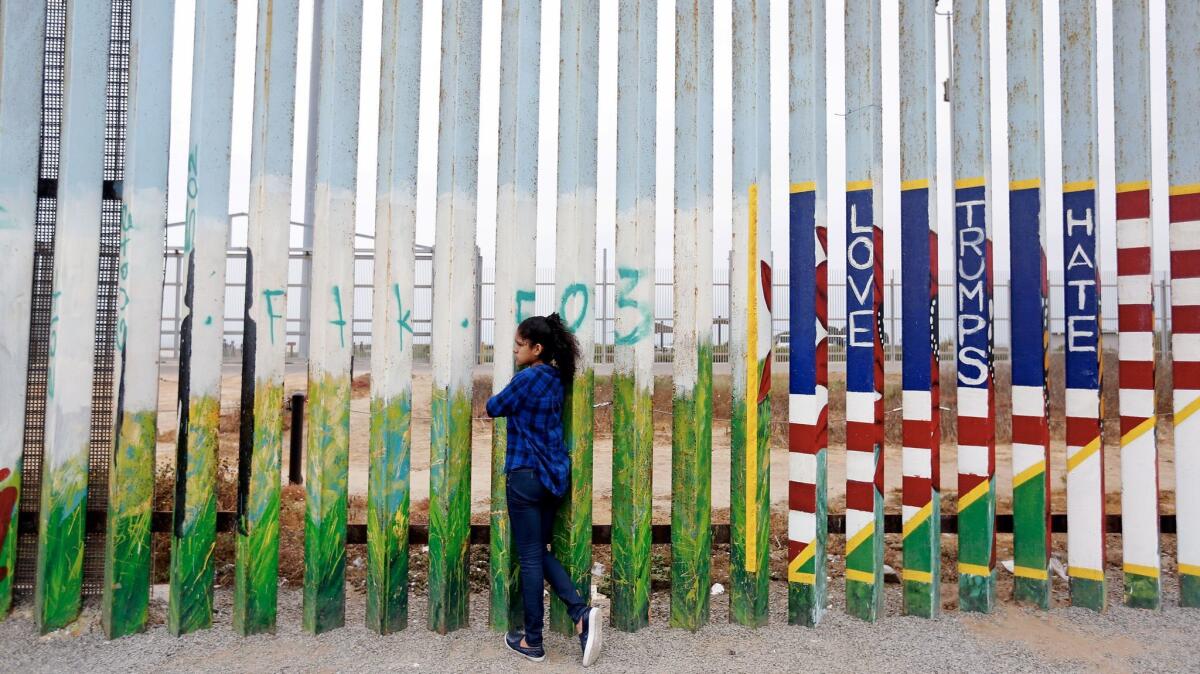
The fence is some 12 feet high. It’s a collection of vertical metal shafts and rods with spaces between them. Dense wire mesh overlays a section of the metal posts. This is the first, or “primary” fence, in the nomenclature of the U.S. Border Patrol, which guards these precincts.
Just to the north is the taller “secondary” fence. Between them lies a security corridor, a kind of buffer zone, of about 50 yards in width, lit up like Dodger Stadium each evening.
Mostly inside this corridor is a place known as Friendship Park, where immigration authorities allow visitors limited access to see and speak with relatives on the Mexican side. Touching through the fence is forbidden, except on special occasions, despite petitions from a “Let Them Hug” movement seeking to expand physical contact.
“It was so emotional for me, I couldn’t stop crying,” said Mauro Mejia, 63, from the Mexican state of Nayarit.
He was recalling his first meeting in more than two decades with his son, Ricardo Mejia, 44, a resident of Riverside. The mustachioed father, his face lined like a well-worn baseball glove, was on the southern flank, the son on the north. The son, like others, could jeopardize his temporary legal status if he entered Mexico.
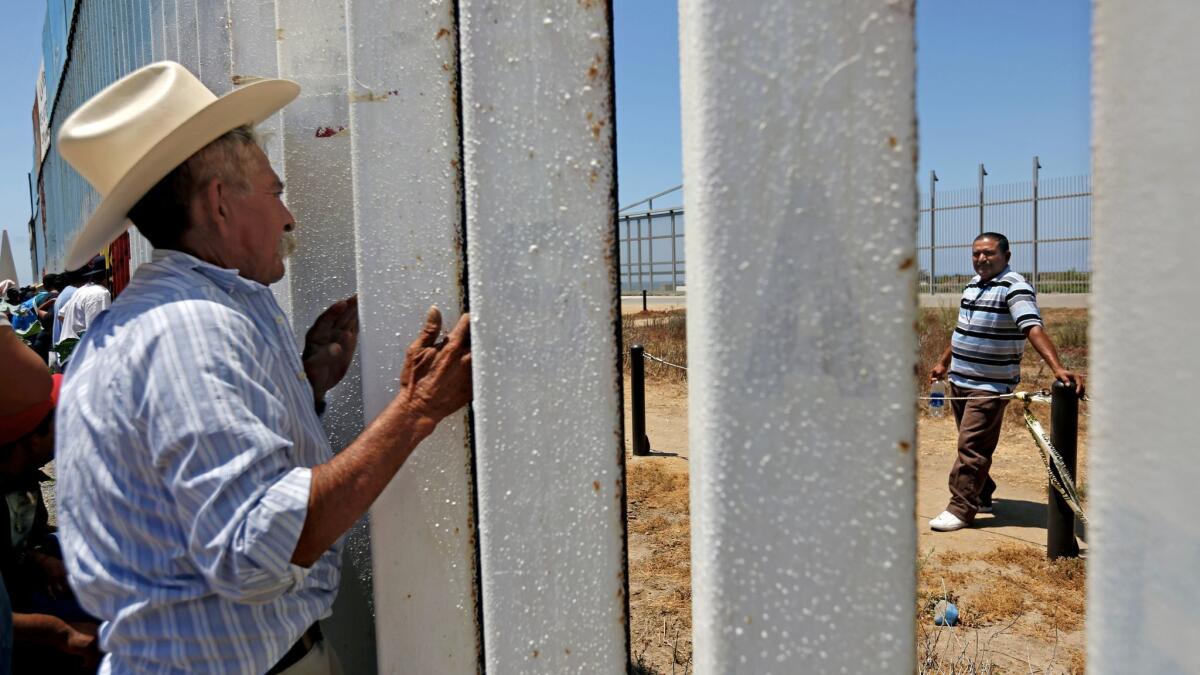
The relatives conversed through the fence, raising their voices; those on the U.S. side have to keep their distance from the barrier. A Border Patrol agent monitored goings-on at the threshold.
Also visiting on Mexican turf was Ricardo Mejia’s mother, brother and fiancee, Chela Vasquez, who proudly displayed her U.S. citizenship certificate, recently acquired. She is one of the multitudes who entered the United States via the border in the old days, and eventually obtained legal status.
“It was so much different then,” she recalled, gathered with her future in-laws along the fence on the Mexican side, not far from a marble obelisk.
The obelisk is the first of 258 boundary monuments that trace their origins to the Treaty of Guadalupe Hidalgo of 1848, which ended the Mexican-American War and saw Mexico lose much of its territory.
These days, some would-be border crossers attempt to swim around the fence, diving into the frothy surf at low tide; others use jet skis or fishing boats-turned smuggling craft known as pangas.
Others still endeavor to traverse the double fencing.
The first barrier is easy enough; a small stepladder or a friend provides a boost. Bystanders watch these attempts with curiosity, but generally no one on Mexican soil interferes with a time-honored tradition. The second fence, some 15 feet high, poses a much greater challenge.
On a recent evening, a Mexican man in shorts, sunglasses and a straw hat was almost atop the second fence when a U.S. Border Patrol agent, Eduardo Olmos, spotted him and ordered him to descend. The man complied, slowly climbing down and submitting to arrest.
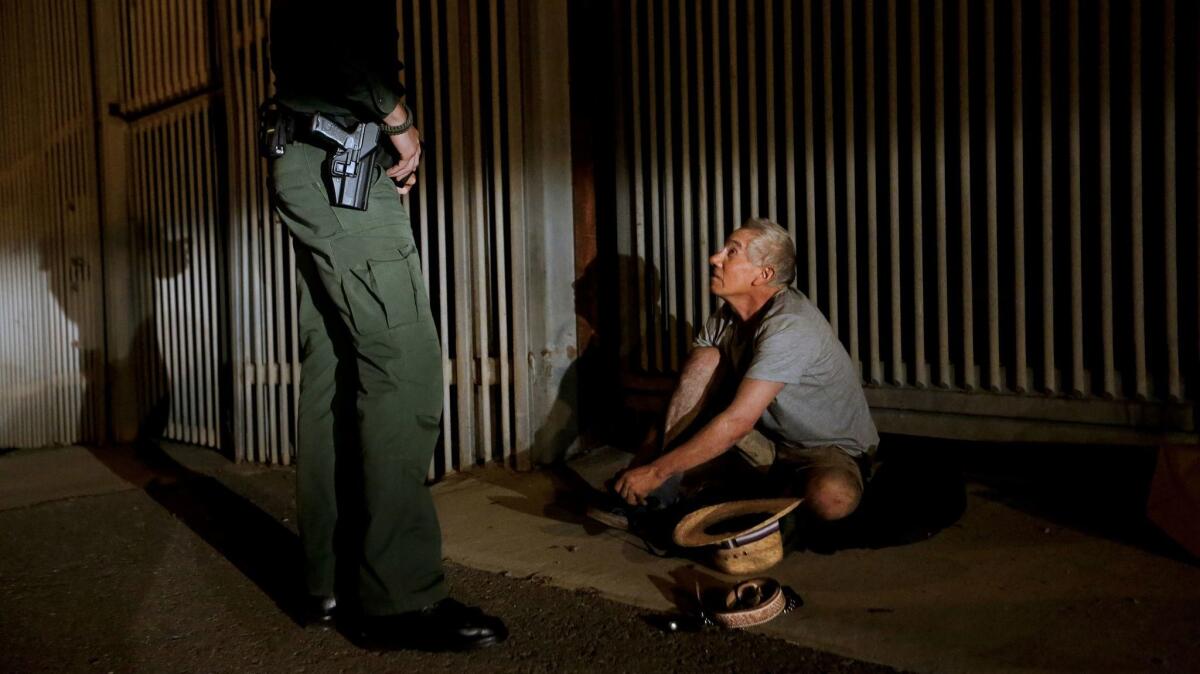
Earlier, Olmos had been inspecting the fringes of the secondary fence, a place where jack rabbits and ground squirrels scamper about in the darkness. Combing through the brush, he found a stash of border-jumping paraphernalia — bottles of water and juice, key items in the trek north.
A group of crossers had abandoned their essentials, perhaps hoping to retrieve the supplies later when the coast was clearer.
Found with the liquids was a curious sartorial appendage — “booties,” in Border Patrol-speak. These are scraps of carpet rigged with wires to be worn over shoes. The rough-hewn sandals look like something Otzi, the famed iceman found in the Alps, may have worn trudging through the mountains all those millenniums ago.
Booties have a purpose: to scrub shoe prints in the sandy soil and foil Border Patrol trackers, who are trained in the venerable art of sign cutting, or following trails. It’s not all high-tech out here, despite the plethora of ground sensors, night-vision scopes and other contraptions employed against line jumpers. Even today, Border Patrol agents on horseback comb the hills and flatlands.
As evening approaches, activity seems to pick up on the Mexican side of the beach. People come to watch the sunset. A post-dusk sky casts a purplish glow on a becalmed Pacific.
Someone among the crowd is surely biding time, waiting for the right moment to scale the barriers and make a run to the north in the place where two nations, and cultures, meet.
ALSO
Mexican president says country will not compromise its ‘dignity’ when dealing with the U.S.
Los Cabos is no longer a haven from Mexico’s bloodshed
The 1985 murder of a DEA agent still haunts Mexico. Finally, a drug lord gets sentenced in the case
twitter: @mcdneville
More to Read
Start your day right
Sign up for Essential California for news, features and recommendations from the L.A. Times and beyond in your inbox six days a week.
You may occasionally receive promotional content from the Los Angeles Times.
